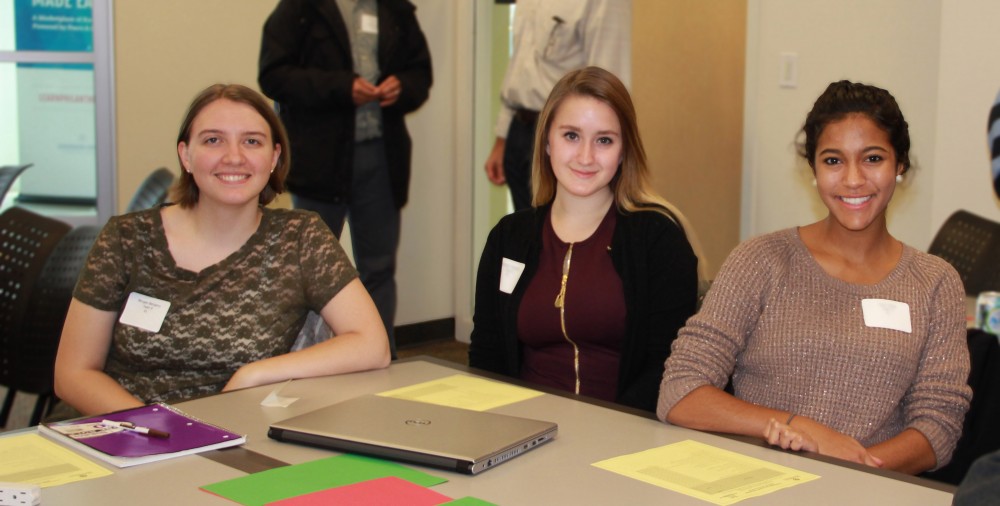GV students participate in Customer Discovery Program

GVL / Courtesy GVSU students and entrepreneurial leads for the Customer Discovery Program Morgan Benjamin, Caileigh Wasmer, Taylor Sims
Nov 12, 2015
The Technology Commercialization Office (TCO) at Grand Valley State University recently completed their four-week long customer discovery program (CDP) with the University of Michigan’s Center for Entrepreneurship.
The discovery program had eight teams made up of students and faculty. The study was funded by a grant from the Michigan Economic Development Corporation. Ten GVSU students volunteered as entrepreneurial leads for the program.
The program launched on Oct. 2 and had its finale on Oct. 23. It was a continuous project that put students outside of laboratories and classrooms and introduced them to the workforce full of competition and customers.
Linda Chamberlain, director of TCO, was happy with the outcome of the CDP and noted that the faculty and students involved gave the program good and excellent ratings.
“Each team consisted of an entrepreneurial lead (student), primary investigator (faculty) and a business mentor (community business member),” she said. “It provided eight teams of faculty, graduate and undergraduate students the opportunity to test the efficacy of their technology in the marketplace through extensive customer interviews.
“The teams were required to schedule 30 interviews in the four-week period in order to test the hypotheses behind their technology.”
Connor Payne was one of GVSU’s entrepreneurial leads during the discovery program. He heard about the opportunity through Chamberlain. Payne, who is double-majoring in business management and management information systems, found the program to be very helpful toward his career.
“I had the opportunity to interview upward of 30 industry professionals, set up and conduct meetings with executives of furniture companies and architecture and design firms, piece together a portion of the business model canvas and present to graduate classes,” he said. “I learned how to ask the right questions and how to keep people engaged.”
Payne said that overall, he learned how to network with people better and how to use his own network. Although it was stressful juggling his schoolwork and the program, he learned important skills throughout the duration of it. He had a chance to test out customer discovery when he built his own app called “Ahoy Lakers.”
“I loved going out into the field and asking people what they wanted to see,” Payne said. “I found out that what the end users want is not typically aligned with what producers are putting out there.”
The CDP is the first of its kind of curriculum and hopes to validate the sustainability of potential business ideas.
“The CDP is designed to help understand a ‘product-market’ fit for a technology or service before you spend a lot of time and money in developing the same for the market,” Chamberlain said. “The team must create an initial ‘value proposition’ or hypothesis on what problem their technology, product or service will solve. The team then maps the ecosystem of who cares – customers, regulators, competitors, etc.
“The program culminates with each team presenting their total findings, and making a recommendation on whether or not to proceed,” Chamberlain said. “The process is a lot of work, but is also hugely informative, not only about the technology commercialization potential, but also the team participants.”
Chamberlain hopes to offer the CDP again in the near future.
“The faculty (has) commented how much the process informs their research,” she said. “The students comment that the process, while grueling at times, gives them an entirely different skill set. The mentors generally feel privileged to be of service to GVSU, and most translate the process back to their companies.”





















